
Tallahassee Area
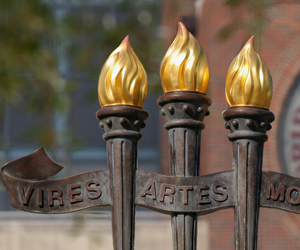
Tallahassee is both the state capital and a college town. The result is a cosmopolitan blend of modern urban Florida, intellectual sophistication and laid-back Southern hospitality. The growing metropolitan population of over 300,000 is politically progressive and supports a vigorous arts community. Urban planning and extensive tree cover make it one of the most beautiful, livable cities in the south-eastern United States. Recreational opportunities are abundant due to large areas of public land nearby. Outdoor enthusiasts can take advantage of the St. Marks bike trail, canoe on the many clear, spring-fed rivers, and find excellent fishing in the gulf and nearby lakes.
The Arts in Tallahassee
Tallahassee's status as a mecca for the arts is due to Florida State University past as the Florida State College for Women, where a school of Music was established in the 1920s, and other visual and performing arts followed as a part of the curriculum. Today, the University is proud to have programs in music, film, theater, dance, opera, and visual arts that are among the best in the nation. These activities enrich the whole community, for example through the 500 concerts sponsored annually by the College of Music, the year-round shows at the Museum of Fine Arts, and the frequent drama, opera and dance performances. The height of the arts calendar is the annual Seven Days of Opening Nights festival, that features performances, readings and exhibits. At last count, Seven Days was 17 days long, and promises to grow even more.
A lively arts community has also taken root in the local area independent of the University. The Mary Brogan Museum of Art and Science (MOAS) and the LeMoyne Center for the Visual Arts stage year-round contemporary arts exhibits. Railroad Square Art Park is home to over 80 galleries, studios and shops. Craft and folk art is also well-represented with weekly Downtown Markets, and several annual outdoor festivals. The Civic Center hosts a variety of concerts, musicals and sports events. Tallahassee Little Theatre hosts a regular schedule.
Music is also abundant with the Tallahassee Symphony, several active local venues such as the Moon, and the Bradfordville Blues Club. Music festivals in the area include blues, roots and folk.
Environments and Habitats around Florida State University
North Florida encompasses an incredibly diverse array of habitats. Ranging from south Appalachian clay hills to nearly subtropical forests to incredibly diverse seagrass communities, the plants and animals of the area reflect the variety of local habitats. These habitats are used for graduate and undergraduate classes in ecology and evolution, as well as research by various faculty and graduate students. Much of the immediate area around Tallahassee was originally a mosaic of long-leaf pine and wiregrass communities, interspersed with live-oak woodlands and swamps, as captured in the writings of early explorers such as William Bartram. Collaborative research on long-leaf pine communities is frequently conducted at the Tall Timbers Research Station. An excellent introduction to the wildflowers of our area can be found on Mike Abrahm's Wildflower page.
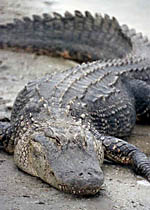
To the southeast of Tallahassee is the St. Marks National Wildlife Refuge. A large section of the refuge consists of freshwater and saltwater impoundments maintained for migratory waterfowl. This area also is home for a variety of other wildlife including alligators, otters, and deer. The coastline from here east to Cedar Key is included in the Nature Conservancy's list of "Last Great Places" because of its unique habitats. Another section of the National Wildlife Refuge is more inland and includes old second growth flatwoods and sandhills habitat. The Florida National Scenic Trail runs through the sanctuary into the Appalachicola National Forest to the west.
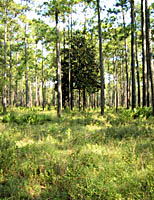
Tallahassee is located only thirty minutes from the Gulf of Mexico and within a short drive of a variety of marine habitats. Salt marshes, seagrass beds, bivalve reefs and hard bottom communities can all be found within a two-hour drive from campus. FSU's Marine Laboratory is situated an hour from our main campus, with research facilities, housing, and a flotilla of boats. This allows access for research in several ecologically interesting and critical habitats, including St. Joe Bay, Appalachicola Bay, and Apalachee Bay. We are also affiliated with the National Marine Fisheries Service through the Institute for Fishery Resource Ecology, which offers graduate and undergraduate research opportunities throughout the Gulf of Mexico. Florida State University also has one of the nation's largest Academic Diving Programs supporting research programs locally, and throughout the world.
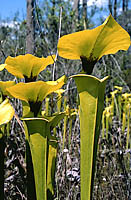
Some of the most beautiful local habitats are still preserved in the Appalachicola National Forest and Tate's Hell State Wildlife Area to the south and west of Tallahassee. This area consists of mostly second growth forests and some pristine swamps, interspersed with boggy, open "savannahs." The largest remaining population of the endangered Red Cockaded Woodpecker persists here. North Florida contains among the highest diversity of carnivorous plants in the world, including pitcher plants, sundews, and bladderworts.
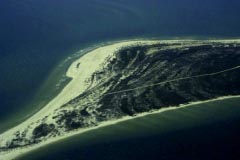
To the southwest of Tallahassee is the Appalachicola Bay, where the Appalachicola River runs into the northern Gulf of Mexico. The bay is fronted by four unique island, including St. Vincent (a national Wildlife refuge), Cape St. George Island (a state wildlife refuge), St. George Island (the extensive St. George State Park), and Dog Island (primarily owned by the Nature Conservancy). These islands are an ideal resource for research and teaching, utilizing the nearby FSU Marine Lab and the Apalachicola National Estuarine Reserve.

